Running a longarm quilting business – Q&A with Shirley Jackson
Editor’s note: Many APQS owners turn their passion for quilting into a profitable business. We decided to sit down with a few of these entrepreneurs to learn more about how they started their businesses and what words of wisdom they have for others who might be considering it.
We begin the series with Shirley Jackson from Murray, Ky. We reached out to her to talk about how she got started quilting for others and what thoughts she had about her success. Enjoy!
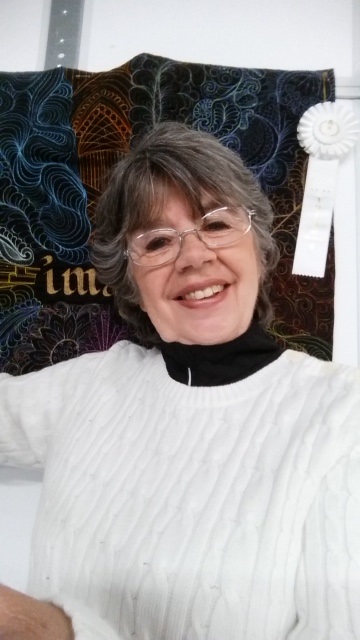
How long have you been quilting for others?
I’ve been quilting for others about 12 years. During the first year I used my domestic Pfaff. Her name is Laverne and she has been with me for years and years. Quilting on a domestic machine is tough. But it’s a good place to start.
My next machine was a mid-arm machine that I struggled with. It wasn’t the best quality and it forced me to learn more about the mechanics behind a machine than I wanted to know. Six years ago, my husband said he was tired of fixing it and told me to buy a reliable machine. Enter APQS! My dealer dealt with my questions and comments for almost a year before I bought my APQS Freedom, affectionately named Squiggy. Why I waited so long is beyond me! Squiggy is now a mainstay with Laverne and, me, Shirley!
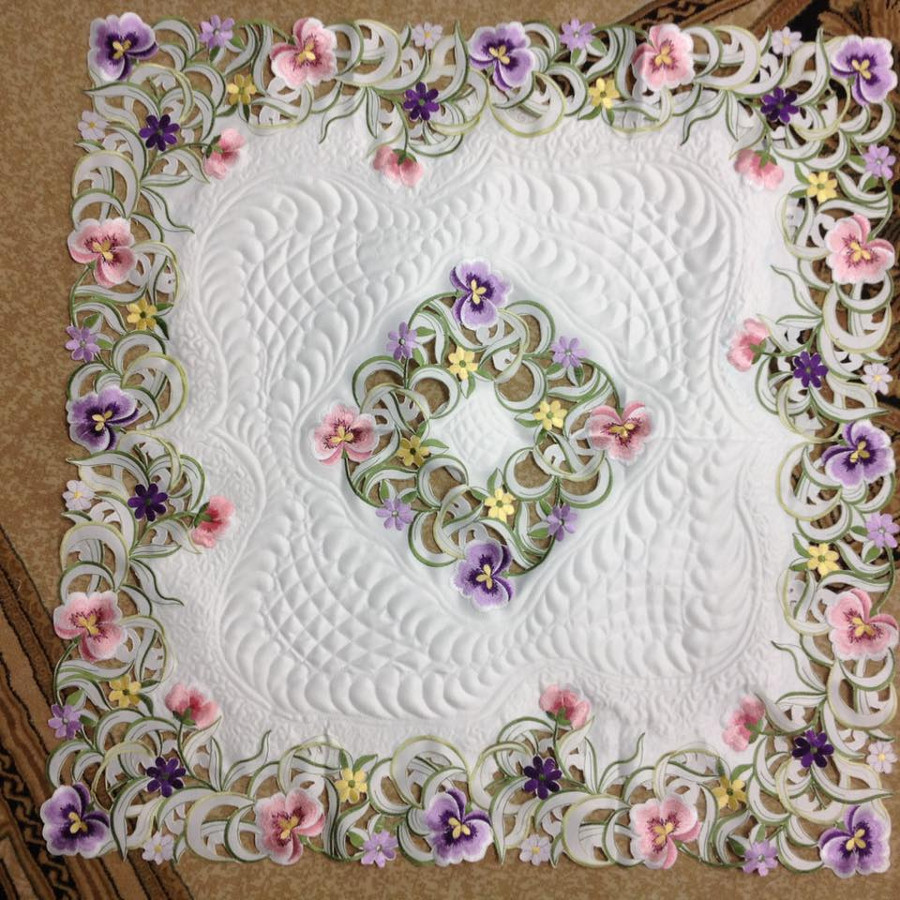
How did you get into quilting for other people?
I was asked to make a couple T-shirt quilts. Then I quilted a queen-size quilt for a friend. Quilting those on my sit-down domestic machine hurt my shoulders and elbow so I moved to a stand-up quilting machine. I quilted only for friends for a short time. Then, a gal from Alaska saw my blog and asked if I’d do a couple for her. After that I became more confident and started quilting for friends in online groups and my local guild. I’ve never looked back except to learn from my mistakes.
What types of quilting do you most often do for your customers? (panto, custom, light custom, etc?)
This varies with the customer. If customer is new to quilting, I try to stay with freehand, all-over designs. I can adjust any variables in her quilt and hide problem areas with the design. Other customers who like continuity and design will lean toward pantographs. I keep a variety of pantos from simple to complex on hand.
It really depends on so many factors. Each quilt is different and it also depends on how densely quilted the customer wants the quilting to be. If the quilt is going to be a gift, the age and gender of the recipient is considered.
I love doing light custom. I get to stretch my creativity and try new designs. I adore stitching feathers and find it my go-to design for this type of quilting. When you get into the heirloom or show quilting level, I freeze up! It seems to take me forever to come up with an idea and to transfer it to actually working on a quilt. I use a drawing program on my iPad to show customers what I’m thinking. They get to participate in choosing the design, add their thoughts or decline a design. I find getting the customer’s input helpful to me for this level of quilting. I need their input and it helps to ensure a very satisfied customer in the end.
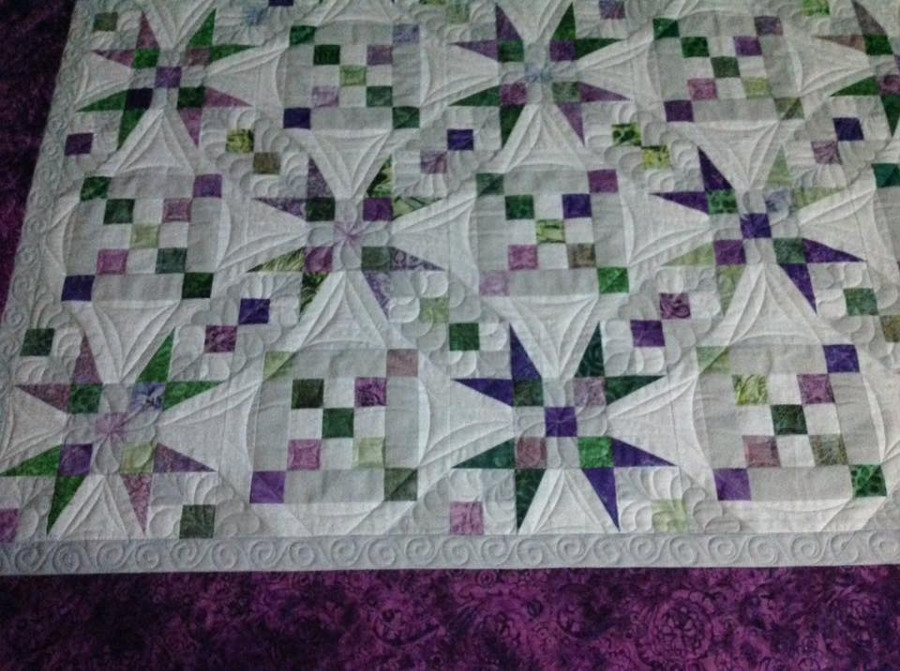
What longarm machine do you use in your business and why did you choose it?
I chose the APQS Freedom. It doesn’t have some bells and whistles but it has so many features I needed. Upgrading from a smaller mid-arm of a different brand, I like the added throat space. I have to say that the Bliss table is a dream come true! Oh, and the automatic fabric advance is wonderful! I almost didn’t add that option but thankfully I listened to my dealer when she said I really should have it. And wow! When I’m doing custom it really makes things simple!
The biggest reason I went with the APQS brand was reliability. I needed a machine that I could turn on and it would run!
I looked at a few other machines at a show but the deciding factor was knowing I could call my dealer or tech support at APQS. I’ve only really needed help once. But the story I love to tell others is how I thought Squiggy, my APQS Freedom, sounded different. I sent my dealer an audio recording I did with my cell phone. She shared it with Dawn Cavanaugh, APQS Customer Service & Education Director, at the factory and they said Squiggy was fine… but the cover for the pantograph table had slid off the felt pads. I looked, and sure enough, it had! The paper panto had covered it so I didn’t even notice but they could hear it! THIS is the service and knowledgeable tech support you get from APQS! They can hear stuff on an audio clip! Now that amazed me!
The only repair I had was some uncontrollable stitching from my machine that freaked me out one day. I took a video with my phone, sent it to APQS where a knowledgeable tech supporter looked at it and sent me back some instructions in a PDF file. It turned out it was just a loose wire. I was back in business the same day. APQS never lets their customers down!
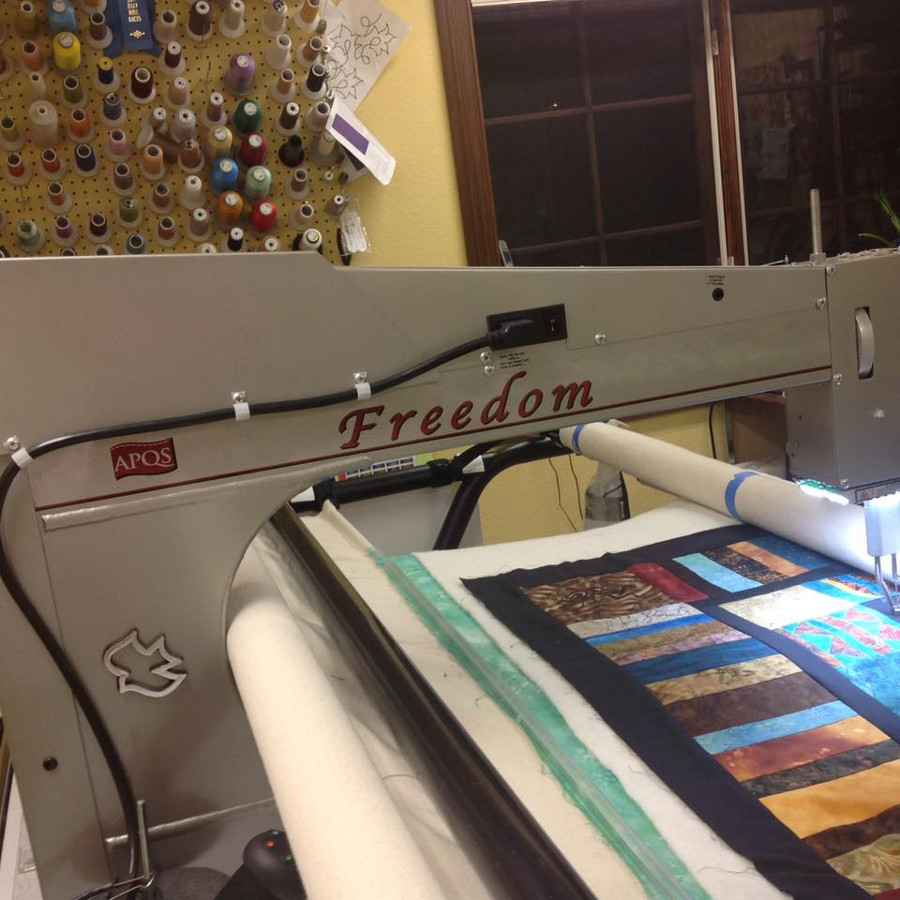
What is your favorite batting?
I use Hobbs Heirloom 98% of the time. I only use poly when I do a t-shirt quilt or a customer provides it. I do keep a roll of Quilters Dream for one special customer.
What is your favorite thread?
Glide! Hands down! I have some others brands from my mid-arm days that I really should use up. But there’s never a question using Glide as to whether it will break or knot… it just quilts from start to finish!
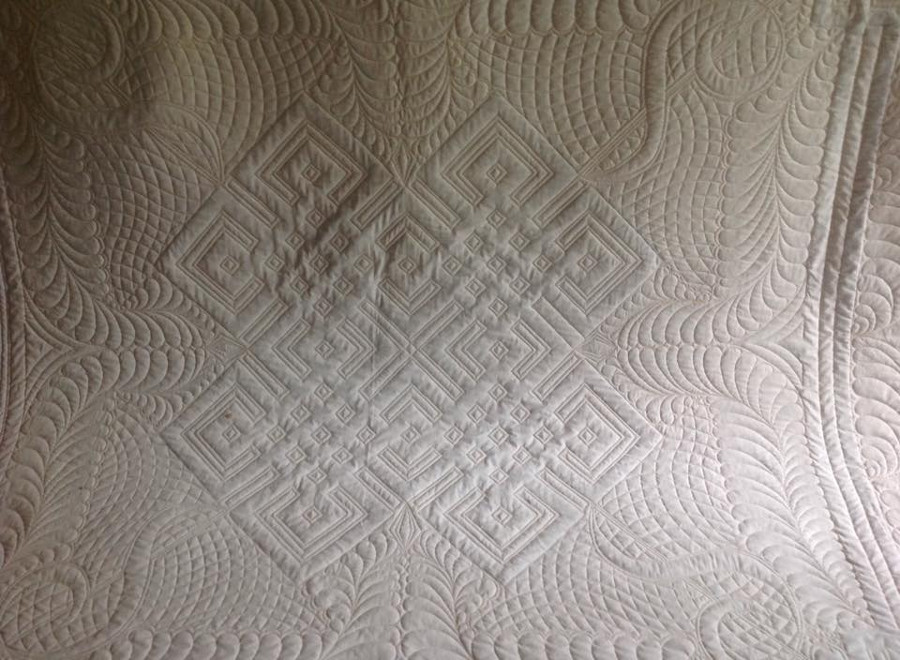
What is your favorite ruler or gadget right now?
My extended table. I use it if a quilt needs extra help because I have something I can rest my hand on. If I’m going around appliqué it almost seems like the ‘drag’ of the table gives me more control. Sometimes when I finish ruler work and move on to feathers I forget to take it off and, honestly, I don’t even realize it!
What are the top three pantograph patterns that you use for your customers?
I guess I don’t have a top three. It’s more like the favorite of the moment. I’ll use a couple over and over… then dig in the basket and come up with one I’ve forgotten about. Then, that one is my new favorite!
What percentage of your customers are local and what percentage of folks mail you quilts? Which do you prefer?
In the beginning I was 100 percent mail order. But as word got out, I became more active in a guild and now it’s more local. So I’d say 60/40. I still have my first customer from Alaska!
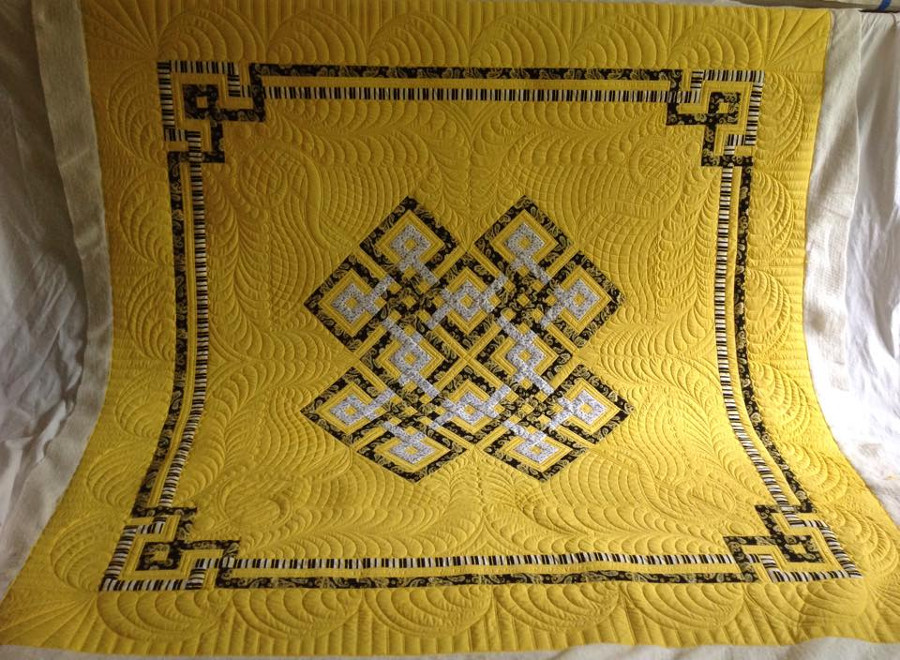
Describe your studio and how you organize your longarm studio.
In the next three to four weeks we will be moving into a new house. I’m hoping to be more organized in the new space than I currently am. Right now my studio, living room, kitchen and bedroom are all in one metal building and all one big room. I have been reading up on organizational ideas and hope this room will make me happy.
I have TWO wonderful empty closets in the new house that I can’t wait to fill up with my special stuff still in storage; a center cabinet and drawers to fill; two nice large windows to daydream while looking out; beautiful hardwood tile that will be easy to keep clean; two new LED lights that will brighten my every day! I’ll also have a nice long wall that will become my design wall. I am looking forward to moving in soon.
What is the best thing about quilting for others?
I love that it brings out the best in me. Growing up, I never was an outgoing personality type. Quilting makes me reach out to others. It has also brought out a creative side of me that I like. My home ec teacher told me once, long, long ago, that I would make beautiful things. I thought she was nuts. At 13, I didn’t think I could do much of anything. But she saw something in me that no one else did. And to this day I think of her saying that and appreciate her words of encouragement.
What advice would you give to someone who is thinking of starting a longarm quilting business?
Soul search. Make sure you will work at it. Quilting takes a lot of work and practice! You won’t be good overnight. For me, it was important to find the right person to mentor me, to guide me and push me at times. Have faith in yourself. Learn from your mistakes. Don’t bite off more than you can chew. Learning a new skill, starting a new business, and getting oriented to new equipment is a bit much. Be thankful for your talent and never forget where you started.
What do you wish you knew now about running your business that you didn’t know before?
How much ‘behind the scenes’ stuff there is to manage. I love doing the creative quilting… but never thought about the obstacles of rural living and running a business.
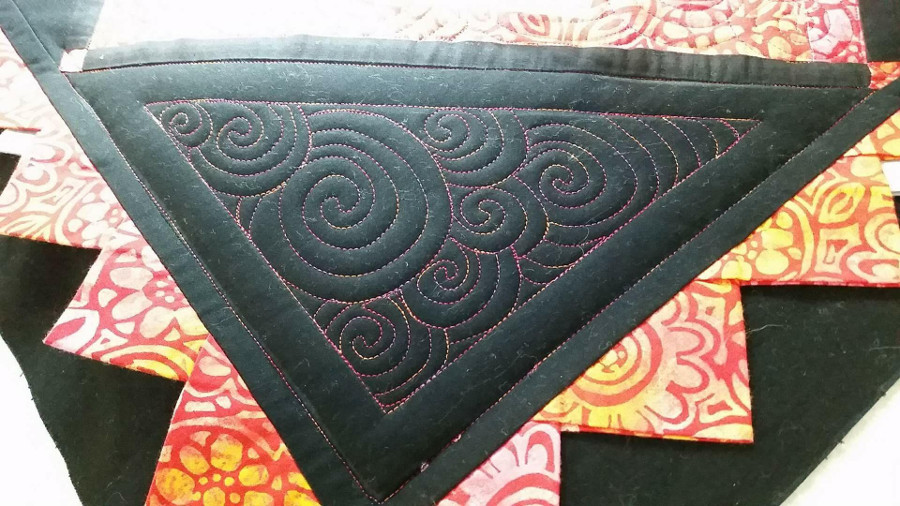
What is something you wish you had in your longarm studio to make things easier?
I keep thinking about computerizing. But downsizing and age has stopped me. I envy the folks with two machines that allow them to run “bread-and-butter” pantos on one and “play” on the other. But I’m thankful for what I have!
Thanks so much, Shirley. We are so happy you are in the APQS family and appreciate the time you took to share your experience with us. If you’d like to connect with Shirley, you can find her on her business’ website or on Facebook at Custom Quilting by Shirley Jackson



